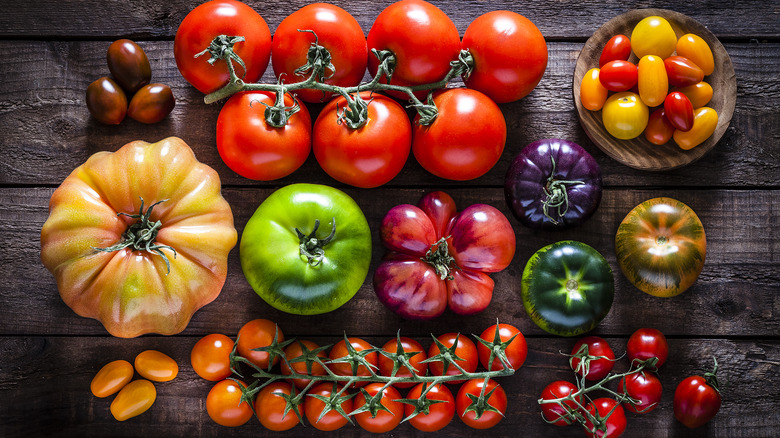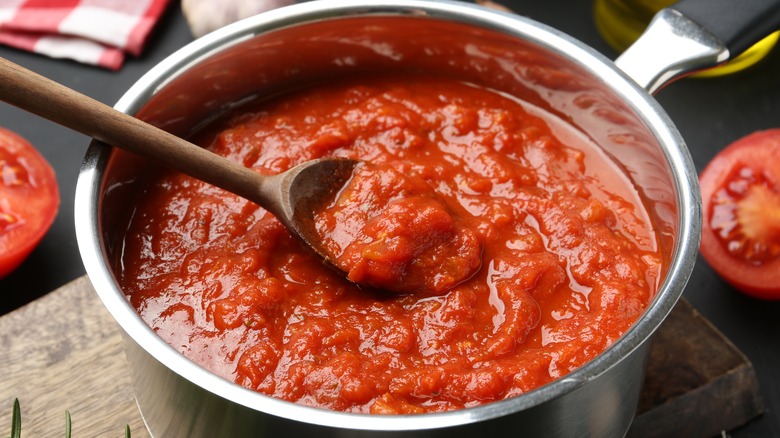The Popular Tomato Variety You Need To Avoid For The Best Sauce
Tomato sauce is a simple yet complex part of any Italian meal, whether you're making it for spaghetti, pizza, or risotto. It should have an intense red color, a consistency that isn't too thin, and a vibrant, fruity flavor with balanced acidity. And the type of tomato that you use for your sauce has a significant impact on these characteristics. If you're choosing just one variety, using beefsteak may be a mistake — and a common one, at that.
Available as both heirloom and hybrid – meaning they are naturally pollinated or developed by scientists to have certain traits, respectively — beefsteak tomatoes are large and come in about 350 varieties: Some of the most common include Cherokee purple, big beef, Brandywine, and mortgage lifter. These are best used for sandwiches and salads because of their high water content, which is also why these heirloom tomatoes shouldn't be used in pasta sauce. Due to their high water content, it can take quite a bit of time to cook out this excess water to ensure that your tomato sauce doesn't come out too thin. By that point, though, you also cook out the fresh flavor of beefsteak tomatoes. For these reasons, using a different tomato will yield less watery and more flavorful results.
Tips for choosing the right tomatoes for the best sauce
If beefsteak isn't ideal, what is the best tomato to use for your homemade pasta sauce? Generally, a paste tomato variety is the optimal choice, because these varieties contain less water and more flesh, both of which contribute to a short cooking time and an intense flavor. The Italian San Marzano, a type of paste tomato, is particularly sweet and meaty, while also having fewer seeds and a lower acidic profile compared to other tomatoes. Other paste varieties that work well for making sauces include Amish paste and Margherita tomatoes.
However, you don't have to stick with just one tomato variety for your sauce. In fact, you'll get a more balanced flavor and acidity by combining multiple varieties. You should still use mostly paste tomatoes for the best consistency, but if your sauce comes out a little too thick, you don't have to sacrifice flavor with water. Instead, to solve this issue, you can add a bit of beefsteak tomato, which has a balance of sweet and tart flavors.
Also, when you're making sauce with fresh tomatoes, in-season varieties produce the best results. On the other hand, canned tomatoes are ideal for simmering sauces when you can't get access to excellent tomatoes, because the fruits are preserved during peak season. Another appealing part of using canned tomatoes is that you can choose from whole, diced, or crushed, so there's less mess and time spent on preparing them yourself.

